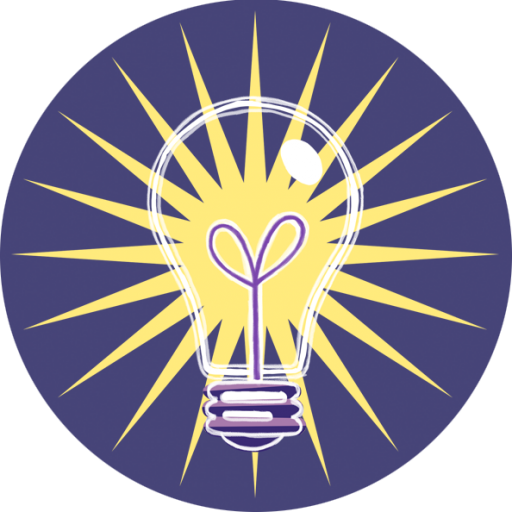What are learner personas?
Learner personas provide a practical way for us learning designers to focus our empathy. But why do we need to do this?
The reason is to help us determine the difficulty level of a learning experience. When we begin a new learning design project, identifying the difficulty level is one of the most important activities we undertake as learning designers. If we set the difficulty level too high, our learners will become demotivated because they can’t engage with the content and activities. If we set it too low, learners will find the programme too easy and quickly lose interest.
This is where learner personas are incredibly helpful, because they help us clarify the prior knowledge, experience and skills that our learners are likely to arrive with. The questions involved in creating a learner persona enable us to begin building an understanding of who the target audience is for the course we’re designing. By empathising with our intended learners, we can determine their likely motivations and frustrations, and anticipate potential barriers to learning that they might face. All of this information guides the learning design process, and helps us choose the most appropriate start point of a learning experience.
It’s important to mention here that learner personas may already be created for you. For example, a Product Manager will often lead workshops with clients to refine and shape learner personas before approaching a learning designer. But if someone asks you to build a learning programme without a clear understanding of the intended audience, I strongly advise you to help them build out learner personas using the process below.
So let’s take a look at how to create a learner persona.
1. Obtain information about the intended audience
The first task is to find out as much as you can about the target audience for the course or programme you’re developing. A good place to start is to ask the person who will be responsible for the final programme – this might be a Product Manager, a Programme Leader, or someone with a similar job title to these. Interview this person and ask them questions such as:
- Why is this course or programme being developed?
- Who is it aimed at?
- Where are these people located?
- What might they already know about the topic?
- What are they hoping to achieve by taking this course?
Next, try and arrange to speak with people from this target audience. You could do this using 1-2-1 interviews or focus groups, or a combination of both. Your aim is to obtain more details about their prior experience and their personal and professional circumstances to further clarify their motivations and constraints. Ask questions such ask:
- What is motivating you to take this course?
- What do you hope to achieve by learning about the topic?
- What do you want to do once you’ve completed the course?
- What previous experience do you have of the subject?
- How confident are you in using digital technologies to support your learning?
- Are there any issues or constraints that could make it difficult for you to participate?
2. Develop your learner personas
Once you have specific obtained information about the target audience for the programme, your next job is to analyse this information and turn it into learner personas (we’ll give you a template for this in the next activity). Your aim here is to develop:
- A primary persona: this is the ideal applicant for your course or programme. Your primary persona should set out the characteristics of the person you want the most on your programme.
- A secondary persona: this is the ‘next best’ applicant. For example, they might meet most, but not all of the criteria.
While your personas are fictional, they should make it easy for you (and others) to see who the course is designed for – and, just as importantly, who it isn’t designer for. As you develop your personas, you should aim to clarify as clearly as possible the level of prior knowledge and experience that these fictional characters have. In the learner persona template, you’ll see that we’ve asked you to set out the applicant’s:
- Professional circumstances: this includes their job title and role (if any), professional responsibilities, priorities, frustrations and goals.
- Motivations: this section aims to capture why the applicant is interested in learning about the topic.
- Prior knowledge: the aim here is to describe what the applicant already knows about the topic, and to make visible any relevant previous experience they have.
- Skill level: these questions examine the skill level of the applicant, and help you determine how confident they are in the technical aspects of the curriculum.
- Needs and constraints: this section provides a way of capturing factors that could prevent the learner from engaging fully in the course or programme such as childcare, caring responsibilities or geographical location.
When you’re developing your personas, I strongly advise you to include an image and a name for each one as this makes your persona feel much more real. Adding images and names enables you to empathise more fully with them, and it also makes them easier to refer to in conversations.
3. Test and refine your personas
Once you’ve created your personas, you need to verify whether they represent an accurate picture of the intended audience. Arrange a follow-up meeting with your Programme Leader or product manager, talk them through your personas and ask them to confirm whether they agree with your findings. Be prepared for the reality that they may never have created personas before, and consequently they may initially find it difficult to engage with the process. Capture any suggestions and feedback they have, and use this feedback to review and update your personas. Repeat this process until they are satisfied that your primary and secondary personas are accurate.
4. Use your personas
Once your personas have been validated, use them! When you’re discussing the course design, refer to your personas by name by asking questions such as ‘Would this activity be appropriate for Anna?’ or ‘Would Sajid be able to participate in this activity?’ It’s a good idea to print your personas so you can easily refer to them – stick them above your computer, put them on the office wall and bring them into meetings. I’ve even heard of some learning designers making full sized mannequins of their personas to bring them to life and make it easier to empathise with them. Do whatever works for you, but make sure you regularly check in with your personas during the learning design process.
You might also like
- Exploring the intersection of customer experience, service and learning design
- How human-centred storytelling can lead to better experience design




Trackbacks/Pingbacks